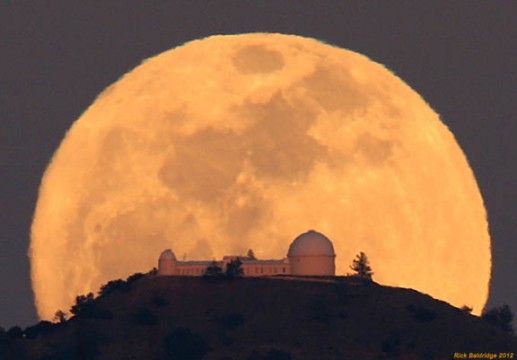
Posts Tagged: subtropical fruit
Hass or Haas Avocado?
There was just a group of Florida researchers here in California sharing their experiences with ambrosia beetles and a fungal disease in avocado and other members of the laurel family. This is a pest/disease complex similar to that found here caused by a shot hole borer and fusarium. Avocados grown in Florida are of the West Indian or West Indian cross with Mexican or Guatemalan varieties. They are usually big, green fruit that tend to be of a lower oil content. Some marketers promote them as “low cal” or “slimcados” as a result. Whatever.
One of the things that struck home during these wonderful talks was the pronunciation of the word Hass. It was “hozzz”. The “a” was pronounced like the a in hot, not in hat. It made me think that this is probably how our familiar fruit is probably pronounced in much of the US. I also hear Californians (and CA growers, too) pronounce this iconic fruit “hozzz”. The generally accepted pronunciation of this name is “HaaaaSSSSS”. Like in the verb “has” - “He has an avocado”.
The fruit variety was found by a California grower named Rudolph Hass in the 1920's. The name Hass is of German origin. How it has come to be pronounced differently from his name is not clear to me. According to Google Translate, even in German it is pronounced as “has”, though with a somewhat clipped “s” on the end.
And not only has the pronunciation of the name been changed, sometimes the spelling in many produce departments is “Haas”. I once saw it on packaging spelled this way and when I asked the produce manager how that had happened, he told me that they had asked the packer explicitly to spell it that way because that's the way the consumers wanted to see it spelled.
So, the consumer drives the market. Maybe how people say it isn't important, as long as they know what they are buying and enjoy the fruit. At least most Californians seem to know how to say the word Hass.
Can you say Hass?
Photo: On the left: Florida (Slimcado) avocado. On the right: Haas avocado or Lamb-Haas. From: The Gardening Cook, http://thegardeningcook.com/slimcado-information/

Hass vs Haas
HLB Tree Confirmed in Riverside
The California Department of Food and Agriculture (CDFA) and the United States Department of Agriculture (USDA) have confirmed the detection of the citrus disease known as Huanglongbing (HLB), or citrus greening, in Riverside County. The disease was detected in plant material taken from a grapefruit tree in a residential neighborhood in the city of Riverside near I-215.
The infected tree has been removed and agriculture officials are moving swiftly on mandatory surveying in an 800-meter area. Mandatory treatments will soon follow. CDFA staff will visit all regulated entities in the quarantine area, including retail and production nurseries and packinghouses. Additionally, local, state and federal agriculture authorities are working together to determine potential implications to the University of California, Riverside, which will fall within the 5-mile quarantine area.
Riverside County Agricultural Commissioner/Sealer Ruben Arroyo plans to take an aggressive stance on any abandoned groves in the area, and the Citrus Pest & Disease Prevention Program outreach team is already working with the City of Riverside to inform residents of the actions needed to stop HLB's spread.
Please read the full press release shared on July 25 by Riverside County.
For more information about ACP or HLB, Riverside County residents may call the Agricultural Commissioner's Office at (951) 955-3045 or CDFA's toll-free pest hotline at 1-800-491-1899 or visit: www.cdfa.ca.gov/plant/acp/

HLB symptoms
Avocado Illusion
Old crop, new crop. What's up there in the trees? Are they big enough to sell? Is there a good set for next year? These are questions every avocado grower has every year, and often all year long. What is up there in the trees is confounded by what is called the "Avocado Illusion".
In a Science Magazine Letters to the Editor in Dec 1990, Paul Sandorff commented on a book written by Maurice Hershenson called The Moon Illusion. In the book Hershenson described the illusion of why the moon seemed so much larger when it was on the horizon than when it rose to its zenith on the same night. http://science.sciencemag.org/content/250/4988/1646.1

Sandorff said that this illusion applied to avocados since it was so hard to gauge the size of avocados when they were in the tops of the tree canopy. It is the surrounding environment that puts a context to size according to this theory of illusion.
Hershenson added to this observation in the March 1991 Science letters section with the comment that the leaves surrounding the fruit changes our depth perception and so changes our idea of the fruit size.
A further addendum to the avocado illusion theory is that since the fruit are the same color as the leaves (they are both dark green and the fruit unlike most other fruit continues to photosynthesize), it is hard to actually make out the fruit. You can be looking right at the fruit and not see it, confusing it with a leaf.
This illusion makes for difficult fruit estimation. To compensate for this illusion, I will eye the canopy in quadrants, counting the number of fruit, then arbitrarily doubling that total number. It usually gives a pretty close number to the real number of fruit that are in the tree.
Photo:
Can you count the number of fruit in this canopy?

canopy fruit avocado
Cherimoya Annual Meeting
ATTENTION: All Cherimoya Producers (and friends),
"Deliciousness itself", Mark Twain
The California Cherimoya Association is sponsoring a knowledge sharing meeting.
Time: Saturday, March 12, 2016, 12:00 to 2 p.m.
Place: California Tropics Packinghouse
6950 Casitas Pass Rd. (Highway 192)
Carpinteria, California
Topics: Pollination and fruit set
Marketing
Ant (and other pest) control
Other commercial production interests
Cost: No charge but reservations are appreciated. Bring your own lunch.
For more information contact: Scott Van Der Kar, ranch.public@cox.net or (805) 684-7900
Please pass this invitation on to others who may be interested

cherimoya fruit
Annual Cherimoya Meeting
California Cherimoya Association Annual Meeting
10 AM, Sunday, April 13, 2014
The Annual Meeting will be held at Hanson Agricultural Center (formerly Faulkner Farms) on the corner of Briggs Rd. and Telephone Rd. in Santa Paula. (14292 W. Telegraph Rd., Santa Paula.) Parking is on Briggs Rd, around the corner
Annual Meeting Admission will be $20. Admission includes:
1. BBQ lunch catered by Sparky's 2. 1 year CCA membership
We need payment by Thursday, April 10, so we know how many meals to order.
Send payment in check, money order, or wampum, (please no Bitcoin) to: Dario Grossberger, 6301 Worth Way, Camarillo, CA 93012. Payment can also be made by PayPal to dario@earthlink.net.
Meeting Agenda
9:30 to 10 AM. Arrival and Registration.
10 to 10:15 AM. CCA Business
10:15 to 11:15 AM. Nino Cupaiuolo and Ben Faber will discuss cherimoya pollination.
For good yields and quality cherimoya in California must be hand pollinated. Ben Faber is a UC Cooperative Extension Farm Advisor who for many years has had an interest in cherimoya and has supported the efforts of the CCA. He visited Spain recently and discussed with researchers their work on pruning cherimoya as a way of controlling time of blooming, and therefore also time of harvest.
Nino Cupaiuolo has been a cherimoya grower and CCA member and Officer for many years. He will discuss his pollination procedures and observations made from pollination done last Summer.
11:15 to 11:45 PM. Dario Grossberger will describe efforts to produce a seedless cherimoya
It's not possible to eat a cherimoya and not wonder how one might develop a variety without seeds. Dario Grossberger is a cherimoya grower and current CCA President. There are indeed such efforts under way, and Dario will make a summary of current progress with the seedless cherimoya
11:45 to 12:30 PM. BBQ Lunch catered by Sparky's.
12:30 to 1:30 PM. Scott Van Der Kar will discuss cherimoya pruning
Cherimoya pruning is essential each year to improve cherimoya yield and quality. Scott Van Der Kar is a cherimoya grower, CCA member and Officer, and past CCA President. He will describe how he prunes cherimoya trees.
1:30 to 2 PM. Raj Desai and Dario Grossberger will describe 21 varieties of cherimoya from Spain
Fruit varieties are always of utmost importance to all fruit. California has developed a set of varieties, most of which are in the collection in Irvine. However, Spain made a major effort, and amassed more than 300 varieties in their collection. They agreed to send 21 of these varieties, selected as the most promising, to California for evaluation. Raj Desai, a cherimoya grower, and Dario, each planted an exemplar of each of these varieties in their orchards. They will describe what they have observed to date on the performance of these varieties.

cherimoya

